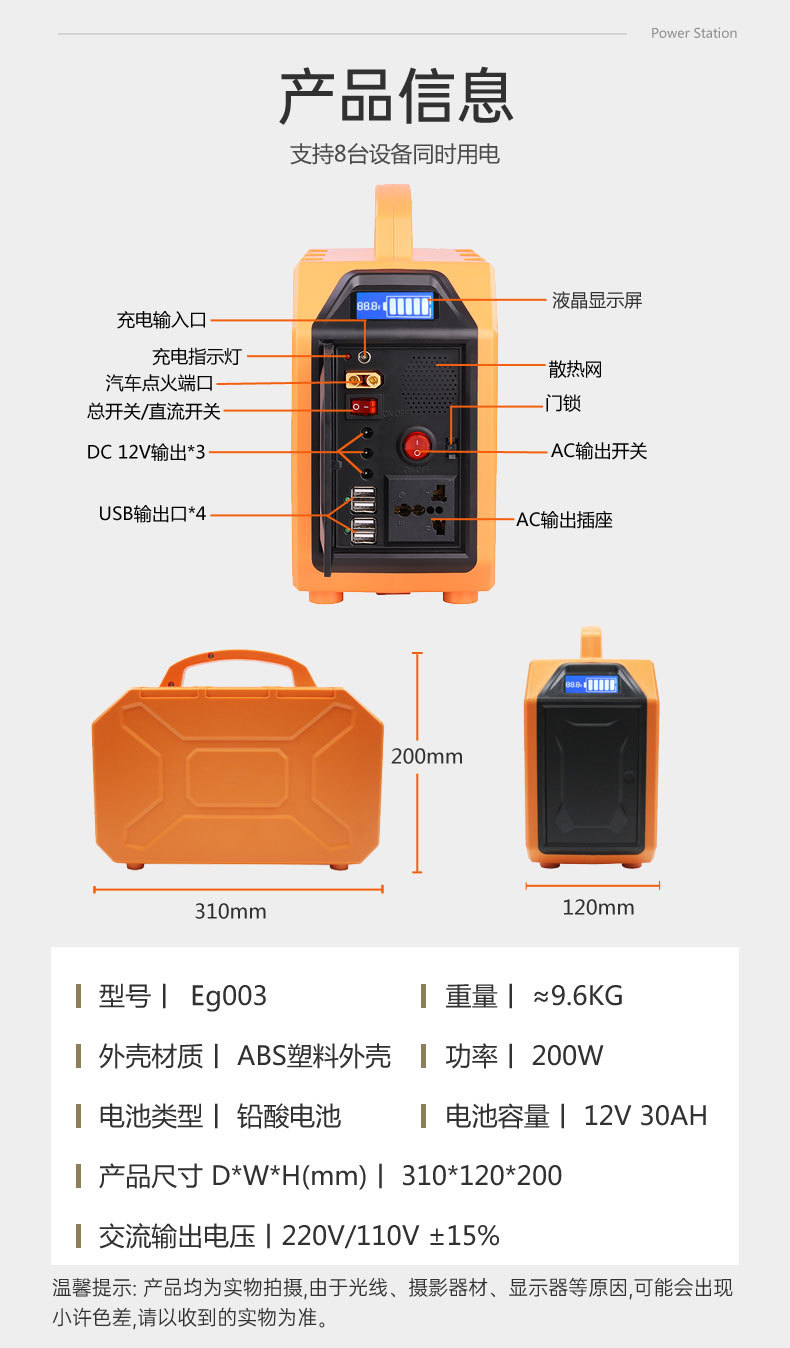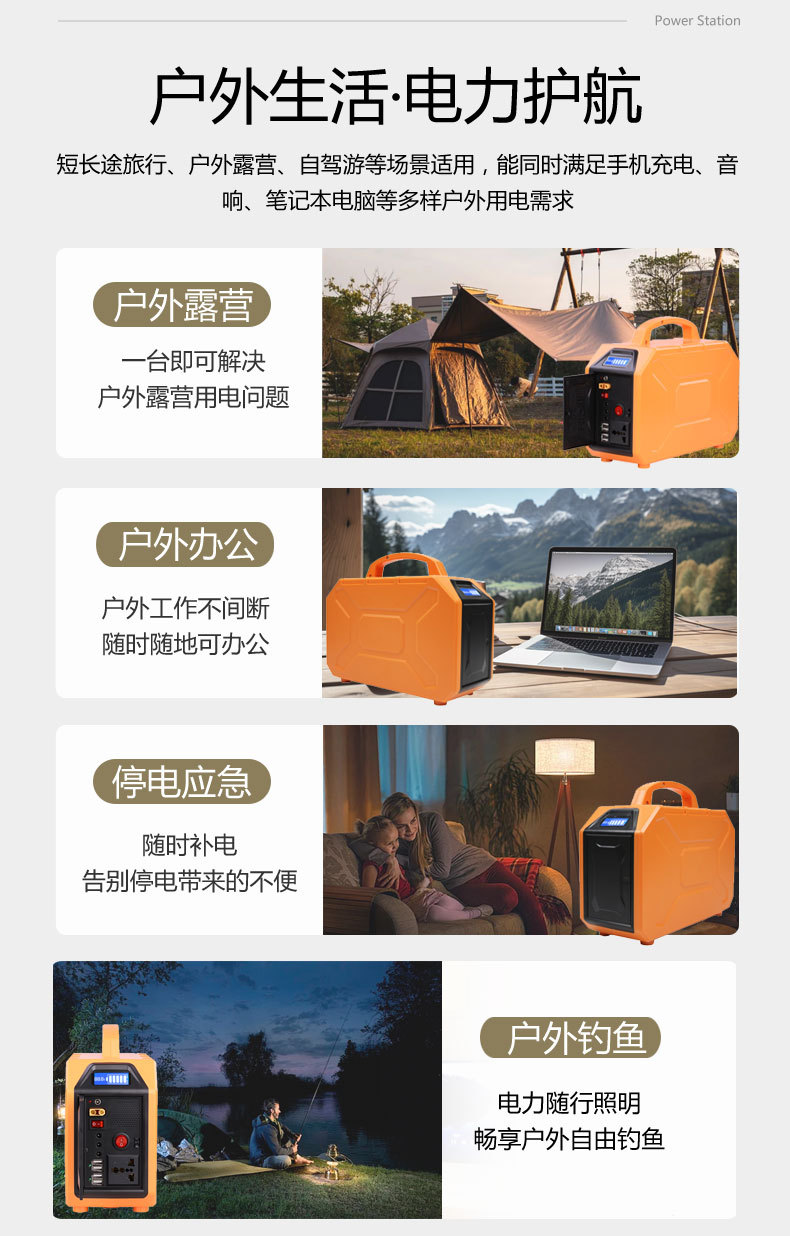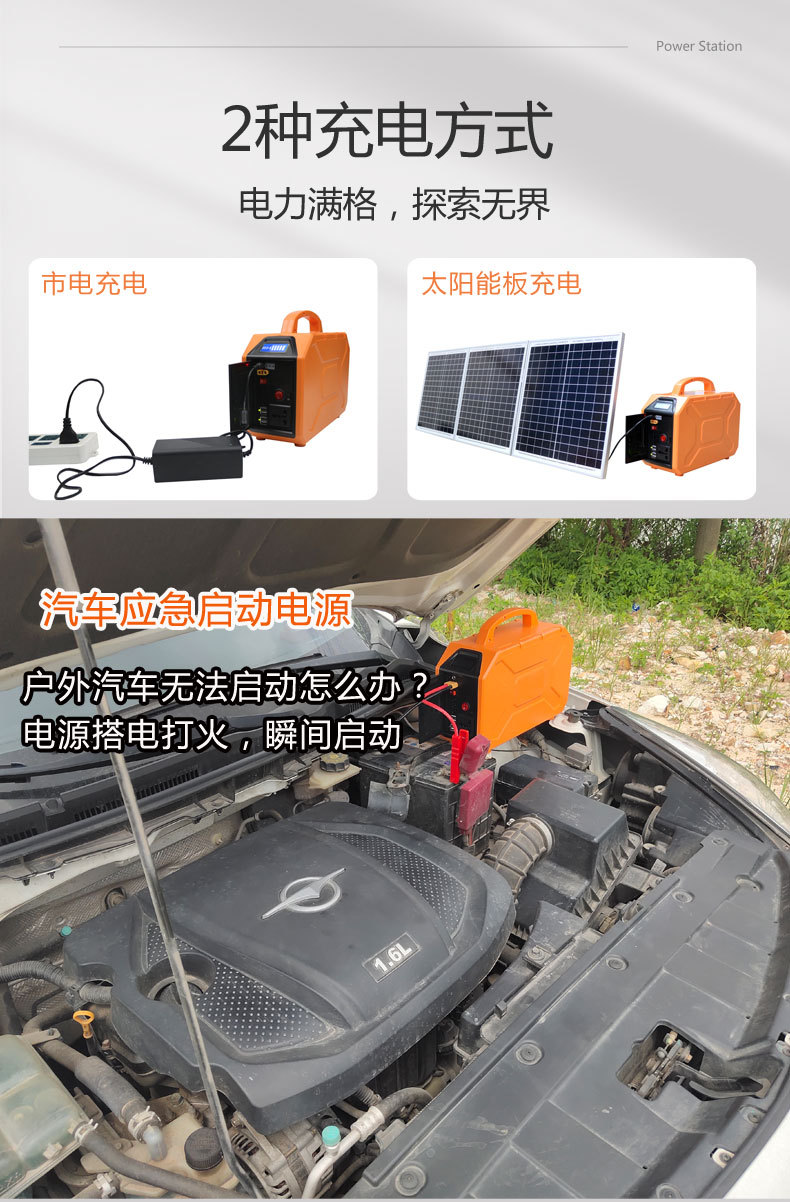USB-A socket
Appearance: It is a common rectangular interface with a wide port and 5 pins. It usually appears in a single form or multiple combinations on portable power stations.
Features: Widely used, highly compatible, and can adapt to most traditional USB devices, such as USB flash drives, mobile hard drives, and mobile phone chargers with non-Type-C interfaces. However, with the emergence of new interfaces, its use on some new devices has gradually decreased.
Transmission speed and power: According to different standards, its transmission speed varies. For example, the data transmission rate under the USB 2.0 standard can reach up to 480Mbps, and the USB 3.0 and above standards can achieve higher transmission speeds. In terms of power, the output power of a general USB-A interface is mostly 5V/1A or 5V/2.1A. Those that support fast charging protocols can reach higher power, such as those that support QC fast charging can reach 18W or even higher.
USB-B socket
Appearance: The interface is relatively square and is usually used to connect some specific devices, such as printers, scanners, etc. It is relatively rare on portable power stations, but it may appear on some industrial uses or energy storage devices with special needs.
Features: It is an interface designed for specific devices with good stability and reliability. Because it is targeted at specific devices, it is not as versatile as USB-A and USB-C interfaces.
Transmission speed and power: The transmission speed varies according to different USB standards. Similar to the USB-A interface, it has different rates under different standards such as USB 2.0 and 3.0. In terms of power, it is generally under the common 5V voltage, and the current depends on the device requirements, usually around 1A-3A. Some devices that support fast charging can also achieve higher power.
USB-C socket
Appearance: The interface is oval, small in size, and has the characteristics of positive and negative insertion, which is very convenient to use. It is becoming more and more common on new portable power stations and gradually becoming one of the mainstream interfaces.
Features: It has strong compatibility and scalability. It can not only be used for charging, but also support high-speed data transmission, video output and other functions. It can replace a variety of traditional interfaces, greatly reducing the number of interfaces on the device, making the device look simpler.
Transmission speed and power: The transmission speed is extremely fast, such as 10Gbps under the USB 3.1 Gen2 standard, and 40Gbps under the USB 4 standard. In terms of power, it supports higher charging power, such as the common 18W, 30W, 65W and even 100W and above, which can quickly charge high-power devices such as laptops and tablets.
USB sockets that support special fast charging protocols
PD (Power Delivery) fast charging socket: usually based on USB-C interface, and some USB-A interfaces also support it. It can automatically adjust the output voltage and current according to the needs of the device, provide flexible fast charging solutions, and the maximum power can reach 100W and above, which can quickly charge laptops, mobile phones and other devices that support PD fast charging.
QC (Quick Charge) fast charging socket: commonly found in USB-A interfaces, and also supported by some USB-C interfaces. Different versions of QC fast charging protocols can provide different power outputs, such as QC 3.0, which can provide up to 18W fast charging, shortening the charging time by increasing voltage and current, and is widely used in many smartphone brands.


